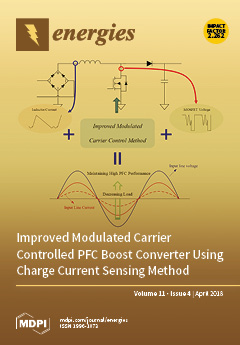Although enhanced coal bed methane recovery (ECBM) and CO
2 sequestration are effective approaches for achieving lower and safer CO
2 levels in the atmosphere, the effectiveness of CO
2 storage is greatly influenced by the flow ability of the injected CO
2 through the coal seam. A precious understanding of CO
2 flow behaviour is necessary due to various complexities generated in coal seams upon CO
2 injection. This paper aims to provide a comprehensive overview on the CO
2 flow behaviour in deep coal seams, specifically addressing the permeability alterations associated with different in situ conditions. The low permeability nature of natural coal seams has a significant impact on the CO
2 sequestration process. One of the major causative factors for this low permeability nature is the high effective stresses applying on them, which reduces the pore space available for fluid movement with giving negative impact on the flow capability. Further, deep coal seams are often water saturated where, the moisture behave as barriers for fluid movement and thus reduce the seam permeability. Although the high temperatures existing at deep seams cause thermal expansion in the coal matrix, reducing their permeability, extremely high temperatures may create thermal cracks, resulting permeability enhancements. Deep coal seams preferable for CO
2 sequestration generally are high-rank coal, as they have been subjected to greater pressure and temperature variations over a long period of time, which confirm the low permeability nature of such seams. The resulting extremely low CO
2 permeability nature creates serious issues in large-scale CO
2 sequestration/ECBM projects, as critically high injection pressures are required to achieve sufficient CO
2 injection into the coal seam. The situation becomes worse when CO
2 is injected into such coal seams, because CO
2 movement in the coal seam creates a significant influence on the natural permeability of the seams through CO
2 adsorption-induced swelling and hydrocarbon mobilisation. With regard to the temperature, the combined effects of the generation of thermal cracks, thermal expansion, adsorption behaviour alterations and the associated phase transition must be considered before coming to a final conclusion. A reduction in coal’s CO
2 permeability with increasing CO
2 pressure may occur due to swelling and slip-flow effects, both of which are influenced by the phase transition in CO
2 from sub- to super-critical in deep seams. To date, many models have been proposed to simulate CO
2 movement in coal considering various factors, including porosity, effective stress, and swelling/shrinkage. These models have been extremely useful to predict CO
2 injectability into coal seams prior to field projects and have therefore assisted in implementing number of successful CO
2 sequestration/ECBM projects.
Full article





